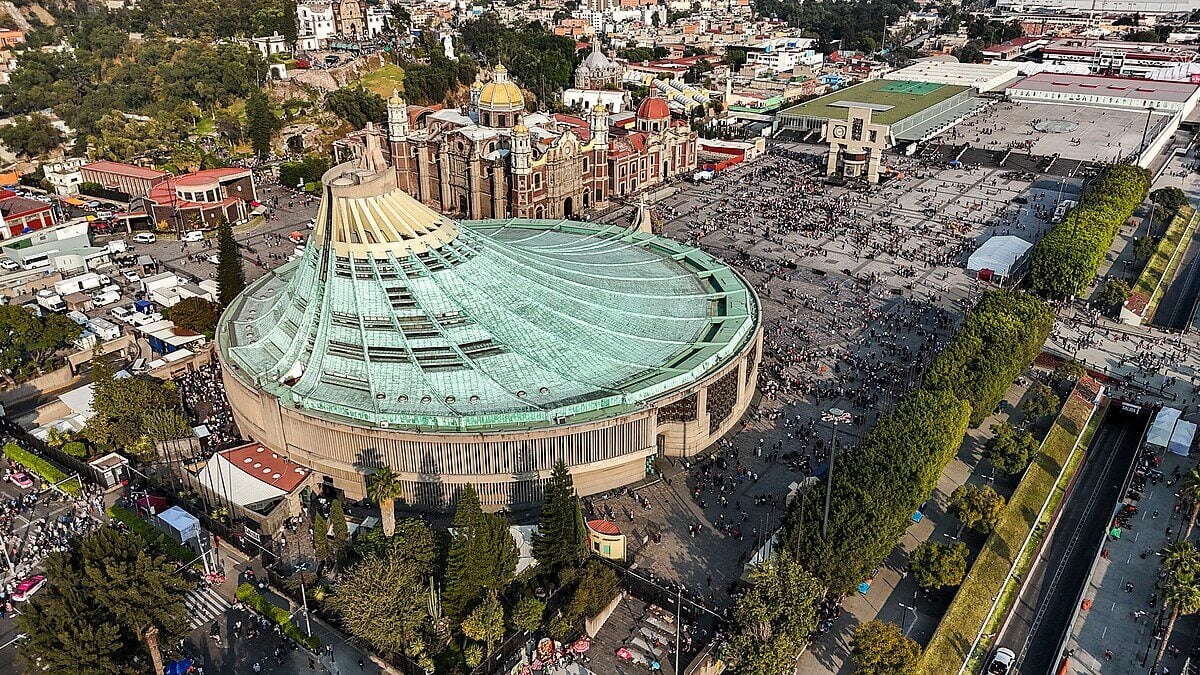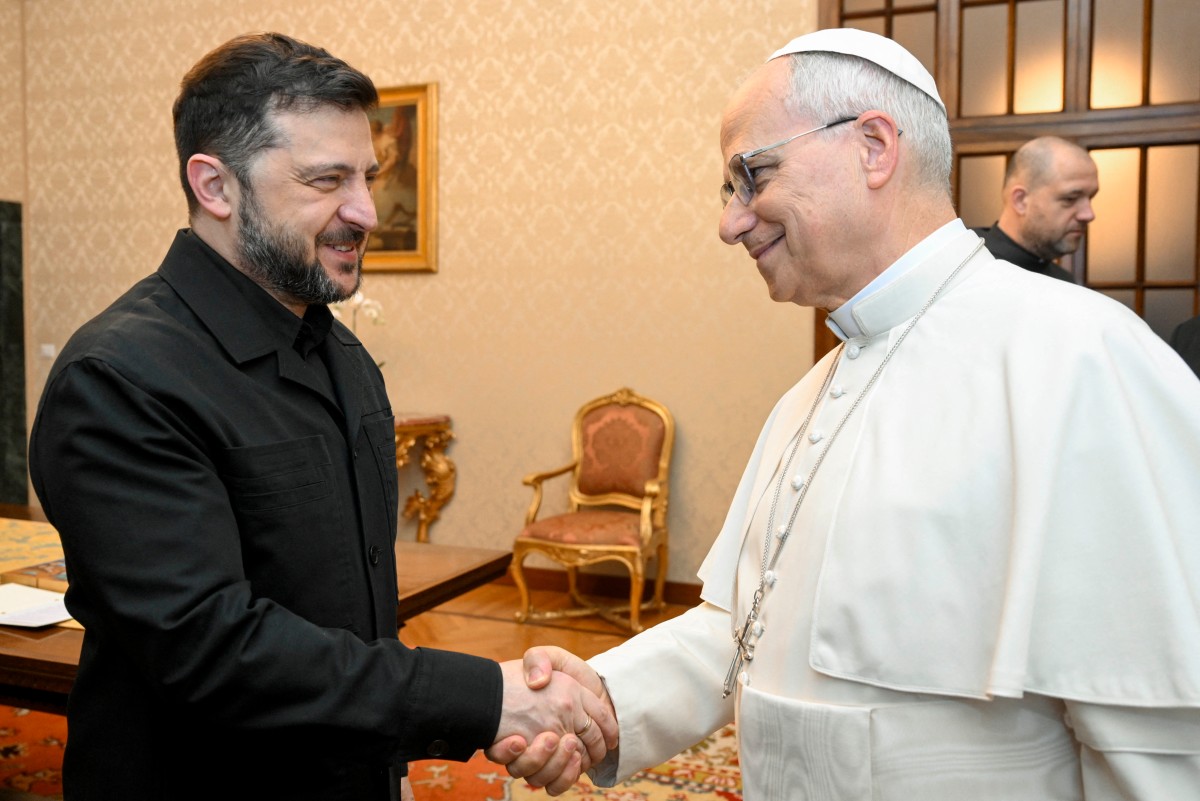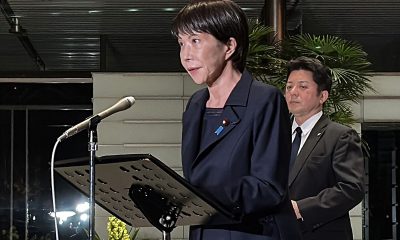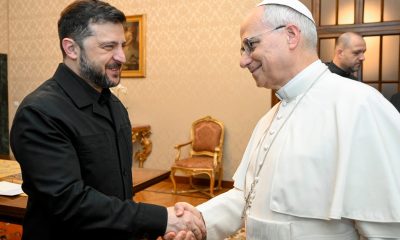International
Native Americans fear loss of Indigenous languages in US

AFP | Nicolas Revise with Joe Prezioso in Newton, Massachusetts
As Native Americans this week celebrated Indigenous Peoples Day — the holiday increasingly recognized in the United States in lieu of “Columbus Day” — members of the continent’s hundreds of tribes shared a common concern: the ongoing extinction of their ancestral languages.
The United States is currently home to 6.8 million Native Americans, or two percent of the population.
Members of the Shinnecock Nation on Long Island gathered for the sunrise to honor this week’s holiday, which has been adopted by more than a dozen US states and cities amid the growing view that Italian explorer Christopher Columbus brought little more than genocide and colonization to the Americas in 1492.
And further north on the Atlantic Coast, people of the Americas and Caribbean ate together as they held discussions, danced and sang.
But while their ancestors saw their communities decimated by centuries of colonization, descendants today fear their culture and languages could be swallowed up in a single generation by English and Spanish.
Decrying “the invasion of the 21st century,” Anthony Sean Stanton, the 64-year-old head of the Narragansett tribe, said his people must “hang onto what we got because once it’s gone, it’s gone forever.”
Further west, the Lakota — a prominent subculture of the Sioux, located primarily in North and South Dakota — also fear the extinction of their language, currently spoken by 1,500 people, compared to 5,000 speakers two decades ago.
For many communities, including the Lakota, the generational transmission of languages halted around the mid-1980s, said linguist and activist Wilhelm Meya, who serves as president of The Language Conservancy (TLC) in Indiana.
There is “a very small window of opportunity to try to bring the language back before the last speakers of this language pass on. And this is a story that’s replicated across hundreds of communities in North America,” he said.
“We’re in the forefront of trying to prevent this total collapse of Indigenous languages in North America.”
‘Hungry’ for language
According to TLC, some 2,900 languages of the approximately 7,000 spoken worldwide are endangered.
At this rate, the organization says, nearly 90 percent of all languages could become extinct in the next 100 years.
Native American languages are dying out at an even faster rate, according to the non-profit, with more than 200 already eradicated.
The best preservation strategy is to teach these languages in schools, says Meya, who notes that the federal government finally allowed communities to take up the practice in the early 1970s.
He also urges the development of other materials in the ancestral languages, including translating cartoon series and documentary films, as well as creating dictionaries and assisting with teacher trainings.
“Anything we can do to reach the young people who are very, very hungry for their language,” Meya said. “They want their culture, they want their identity.”
‘Part of who I am’
Miya Peters, an 18-year-old member of the Wampanoag tribe along the northeastern US coast, is one such example. She learns her language as part of a partnership between her tribal school and public school.
“I love it. It is hard. It’s very different,” she said. “But it’s part of who I am. So it always just gives me that encouragement to just keep going and bring it back.”
Meya and his colleague Travis Condon aim to continue the work of Kevin Locke, an ardent defender of his Lakota language and culture.
The 68-year-old flautist, hoop dancer and storyteller died suddenly on September 30.
“He was definitely a warrior for his tribe, you know, an ambassador for mankind,” Meya said.
The linguist emphasized the need for federal investment in language preservation.
“It took the federal government 100 years and billions of dollars to eradicate Native American languages through the boarding school system,” he said. “And it’s gonna take equal amount of resources to bring back Indigenous languages in North America.”
“It’s much, much more difficult to create than it is to destroy.”
International
Mexico City prepares for 13 million pilgrims at Basilica of Guadalupe

The Mexico City government is expecting at least 13 million pilgrims to visit the Basilica of Our Lady of Guadalupe for the December 12 celebrations honoring Mexico’s patron saint. To ensure the safety and care of visitors, authorities have launched the “Basilica Operation,” mobilizing more than 105,000 public servants.
Mayor Clara Brugada stated that the operation began on December 5 and will continue until December 14, covering the peak of visits to the basilica, located in the Gustavo A. Madero borough in the north of the city.
Key measures include reinforcement of the Metro public transport system, particularly at stations near the sanctuary, the installation of three helipads for medical emergencies, and the involvement of Civil Protection brigades, health ministry personnel, and public safety officers.
Secretary of Public Security Pablo Vázquez explained that the deployment also includes 255 patrol units and numerous specialized teams to manage crowds, traffic, and emergency situations, aiming to guarantee a secure experience for all pilgrims.
Central America
Mexico and Guatemala launch joint security operation after Agua Zarca border attack

The Government of Mexico announced on Tuesday that it has strengthened coordination with Guatemala following an armed confrontation in the community of Agua Zarca, in Guatemala’s Huehuetenango department, where a soldier was wounded in an attack attributed to organized-crime groups operating on both sides of the border.
The Secretary of Security and Citizen Protection, Omar García Harfuch, confirmed that Mexico is exchanging information with Guatemalan authorities and that Mexican Army units have been deployed along the border to reinforce surveillance and assist in reconnaissance operations.
The attack, Guatemala’s Defense Ministry stated, reflects the “criminal dynamics” dominating that border region, where different groups compete for drug and arms trafficking routes.
According to Guatemala’s Defense Ministry, the clash left a soldier wounded in the leg after suspected criminals crossed from Mexico and opened fire. The wounded soldier is reportedly in stable condition. Authorities also seized high-caliber weapons, explosives, tactical gear and drones, which were handed over for forensic analysis.
Mexican Defense Secretary General Ricardo Trevilla Trejo announced that a coordinated plan of operations will be launched involving both Mexican and Guatemalan forces along the border to counter these criminal networks.
Harfuch emphasized that the violence is not isolated but symptomatic of the ongoing struggle between criminal organizations for territorial control, and reiterated Mexico’s commitment to bilateral security cooperation and its intention to strengthen institutional presence in vulnerable border zones.
International
Zelensky meets Pope Leo XIV as review of U.S. peace plan continues

Ukrainian President Volodymyr Zelensky met on Tuesday with Pope Leo XIV in Italy, after pledging to deliver a response to the United States regarding the proposed peace plan aimed at ending the war with Russia.
The meeting with the pontiff took place at the papal residence in Castel Gandolfo, near Rome, where Leo XIV “reiterated the need to continue dialogue and renewed his urgent hope that the ongoing diplomatic initiatives may lead to a just and lasting peace,” the Vatican said in a statement.
His visit to Italy follows Monday’s meetings with European leaders in London and Brussels, amid pressure from U.S. President Donald Trump to agree to a peace plan that Zelensky said he is still reviewing.
According to Zelensky, the plan presented by Washington—originally consisting of 28 points—was reduced to 20 after discussions between Ukrainian and U.S. representatives over the weekend. “We are going to work on those 20 points. We are not completely satisfied with the proposals from our partners,” Zelensky said during an online press conference on Monday.
-

 Central America2 days ago
Central America2 days agoGuatemalan soldier wounded in clash with suspected mexican armed group near border
-

 International2 days ago
International2 days agoJapan lifts tsunami alert after strong 7.6-magnitude earthquake hits northern coast
-

 Central America2 days ago
Central America2 days agoGuatemala reverses asset seizures after judge replacement, benefiting ex-president and former ministers
-

 Central America4 days ago
Central America4 days agoHonduras vote vount drags on as Asfura and Nasralla remain in technical tie
-

 International4 days ago
International4 days agoFive laboratories investigated in Spain over possible African Swine Fever leak
-

 Central America1 day ago
Central America1 day agoMexico and Guatemala launch joint security operation after Agua Zarca border attack
-

 International2 days ago
International2 days agoInterior Dept. redefines 2026 Patriotic Days, sparking criticism over removed civil rights holidays
-

 Central America12 hours ago
Central America12 hours agoU.S. accuses Ortega regime of systematic human rights abuses in Nicaragua
-

 Central America1 day ago
Central America1 day agoHonduran University: Nullifying elections without proof of fraud undermines popular sovereignty
-

 Central America1 day ago
Central America1 day agoCNA director says Libre’s defeat stems from “lack of substance,” not messaging
-

 Central America12 hours ago
Central America12 hours agoHonduras’ electoral chief reports ongoing technical issues but says results remain intact
-

 Central America12 hours ago
Central America12 hours agoU.S. finds no evidence of fraud in Honduras election despite delays
-

 International1 day ago
International1 day agoZelensky meets Pope Leo XIV as review of U.S. peace plan continues
-

 International12 hours ago
International12 hours agoMexico City prepares for 13 million pilgrims at Basilica of Guadalupe




























